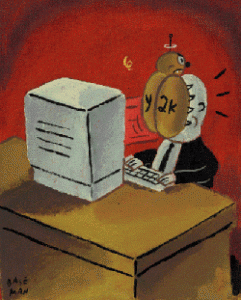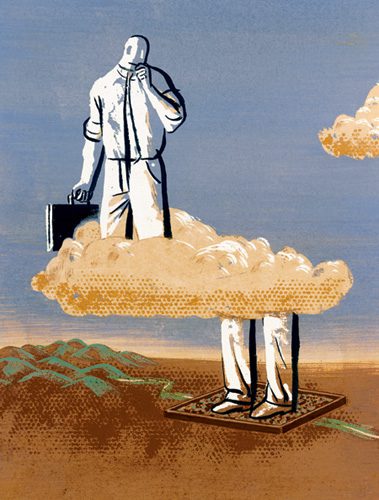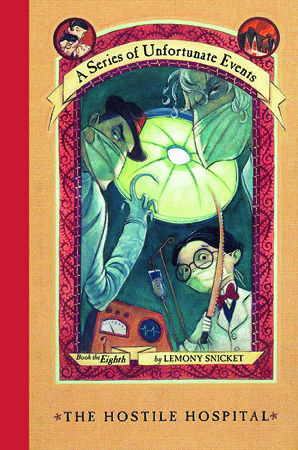Check out your driver’s license, last month’s bank statement, your next grocery receipt, even the expiration date on your milk carton, and you will find evidence of the millennium bug–the flaw in computer date systems that has the technology-dependent world scrambling. In all of these examples, computers abbreviate the year to two digits. When Jan. 1, 2000, arrives, computers suffering from this malady will not be able to interpret “00,” leaving the door gaping for serious hardware and software malfunctions.
But grocery receipts and food expiration dates are the least of the problem. Computers control everything from assembly lines at General Motors to nuclear power plants, and the software that runs them is teeming with what is being called the “year 2000 bug” or “Y2K.” Experts are predicting that costs from both extermination efforts and malfunction repercussions could drain business profits enough to cause a significant economic downturn. And as the new millennium approaches, it is becoming clearer that many companies, government agencies, and others will not be ready on time.
Yet many people are not concerned and continue to ask, “Why not just fix the numbers?”
“This is a problem that on the surface appears relatively trivial and even simple to solve,” says Lynn McKell, professor of accounting and information systems at BYU. “But the use of dates in modern business systems is absolutely ubiquitous. The two-digit problem is analogous to a cancer that has metastasized throughout the body.” McKell and colleague Marshall Romney, also a BYU professor of accounting and information systems, are among an increasing number of experts who are convinced the Y2K problem is bigger–possibly much bigger–than anticipated. They have published several articles warning managers, accountants, and other business-related employees to act quickly and decisively against the Y2K problem in their companies.
If problems are not corrected, a neglected instance of the two-digit abbreviation could send bad data rippling outward, causing fallout ranging from the relatively innocuous to the catastrophic. Vulnerable are everything and everyone dependent on computers–government agencies, utilities, subways, trains. Even devices not generally thought of as computer dependent have “embedded” systems–tiny computer chips like those in elevators and cars. Many chips are date-sensitive and could malfunction when their date attempts to roll over to the year 2000.
A scenario could look like this: If a computer is checking expiration dates on a product in a factory and it interprets “00” as 1900, any product stamped “00” might be deemed out-of-date and diverted to a conveyer belt headed for a dumpster. Dry runs simulating the rollover to 2000 have resulted in hypothetical factory shutdowns, payroll delays, and deadly chemicals being dumped into drinking water.
“A human being faced with an unreasonable piece of data will try to make it reasonable, but when a computer encounters unreasonable data such as a date of 00, it blindly goes ahead and does what it has been told to do,” says computer scientist and BYU alumnus Kevin Van Horn. Unless a system has been tested specifically for a double zero glitch, no one really knows what any particular software will tell the system to do. “There’s no real pattern. All kinds of weird things can end up happening,” says Van Horn, a researcher of speech recognition capabilities in computers for Fonix in Draper, Utah.
The Y2K problem stems back to the early days of computers when it took a room-sized mainframe to do what a hand-held calculator can do today. Programmers saved precious and costly computer memory by using a two-digit shorthand to represent years.
“It was always felt that the savings of the moment were more pressing, that there was adequate time to adjust the systems before the year 2000 and that ultimately these older systems would be replaced,” McKell says. But new computer software is usually made compatible with older systems, perpetuating the two-digit representation. As 2000 approaches, businesses, organizations, and entire governments are left to correct a coding decision made decades ago.
The task is not particularly complex, but the volume of computer applications and code that must be inspected is gargantuan. “Forty years worth of software has to be checked, fixed, tested, and revised in the next year and a half,” Van Horn says. “It’s easy to kill a single cockroach, but what if someone told you that you had to kill every cockroach in New York City?”
Even if every company started working on the Y2K bug today, there is not enough time left or skilled workers available to take care of the problem, says McKell. “The manpower needed to correct the problem really goes beyond our resources.”
The number of hours that will have to be spent is mind boggling. Companies running large mainframe computers with customized software are faced with analyzing literally millions of lines of computer code and making appropriate changes. Companies using hardware and software purchased “off the shelf” (preassembled computers or prepackaged software) need to test their systems for Y2K compliance, work with vendors to correct problems, and implement solutions. “Collectively it just becomes an overwhelming problem,” says McKell.
Complicating clean-up efforts is the fact that most computer business systems were written using COBOL, a computer language in declining use. Most universities don’t teach it anymore, including BYU, and many computer engineers don’t know COBOL and thus cannot effectively de-bug programs for the Y2K problem.
“This has opened up a whole new avenue for retired COBOL programmers. If you have these skills and are retired, there’s a place for you,” McKell says.
Any particular company solving its own Y2K problems is just one layer of the problem. Companies continually interact–exchanging data and depending on one another for information–creating a cascading effect.
“One company may be completely compliant with year 2000 processing, and yet if we’re getting electronic data from someone–say an outside sup-plier or a customer that sends orders or pays bills or whatever–and they’re not compliant, we still have a problem if they are exchanging corrupt data,” McKell says. “And they may even say they’re compliant and think they are, but they’re not. For that matter, we may think we’re compliant and we’re not.”
Managers–and the general public–have been slow to understand the size and immediacy of the Y2K problem. A survey of Fortune 500 companies done in December 1997 revealed that 80 percent had not begun Y2K remediation efforts soon enough to have a reasonable chance of finishing on time. Another survey of 500 small businesses showed that only 41 percent were even addressing the problem.
Van Horn has followed the Y2K problem closely and communicates regularly via the Internet with programmers all over the country. He believes programmers are being scapegoated when managers are often to blame for widespread procrastination. “I’ve heard stories from programmers who kept saying, ‘Look, we’ve got to do something. We’re running out of time.’ And they were told time and time again by managers that ‘we’ve got more important things to worry about now and we’ll worry about it later.’ Basically programmers do what they are told. They follow the priorities that management sets,” Van Horn says.
Madeleine Rackley, a BYU alumna and director of computer systems for the 270-employee Department of Planning for the City of Los Angeles, confirms Van Horn’s observations. She and other systems managers in the city made formal presentations to their department management in 1996. “I would say very few department managers took it seriously at that time,” Rackley says.
Despite a series of meetings with upper management, it took nearly two years to get her department to pay attention, Rackley says. “Their response was fairly typical of how most people respond: Can’t you just fix the numbers?”
That’s easier said than done in an organization relying heavily on computer technology. Citibank alone has 400 million lines of software code to inspect, Van Horn says, and GM has two billion. Smaller businesses may have tens or even hundreds of software applications and work stations to test and upgrade. “There’s simply too much work to do and not enough time left to do it.”
“I don’t know how much to alarm people in general. I don’t know how much to be alarmed. I really don’t. That’s part of the problem,” McKell says. He and Romney have advised CPAs to consider a radical solution to the problem of clients who don’t get the picture about the Y2K bug. “Firms may consider dropping clients that pose a high risk or refuse to respond adequately to the problem,” they wrote in a December 1997 article in the Journal of Accountancy, the most widely read accounting publication in the United States.
Trying to estimate the economic impact of the Y2K problem, experts are offering their best guesses. Business Week commissioned a study in which the results predicted the U.S. economy will slow by a significant 0.3 percent in 1999 and 0.5 percent in 2000 and 2001 because so many man-hours will be spent debugging instead of producing. The Federal Reserve Board has predicted the worldwide repair bill at about $300 billion. The Gartner Group, a consulting firm based in Stamford, Conn., predicts more catastrophic losses–in the neighborhood of $600 billion worldwide.
McKell believes the biggest Y2K cost of all will be incurred after Jan. 1, 2000, when systems begin to fail. “This world will not be ready at the prescribed time and it’s going to cause some economic damage and people are going to sue,” says McKell. He says potential liabilities may develop with software companies whose products fail, with businesses who do not fulfill customer or client contracts accurately or on time, or even with accounting firms who neglect to adequately report companies not Y2K compliant in corporate audits.
“I’ve got to believe law firms are just drooling. I mean, they can hardly wait. The cost of suits resulting from failures is likely to exceed $1.5 trillion,” McKell says.
In the public sector local and state governments who have recognized the problem are struggling to find enough funds to cover their Y2K costs. A year ago California put its Y2K costs at $50 million but recently upped its estimate to $850 million. The federal government has gotten a late start (President Clinton created a White House panel in February), and some sectors may not be ready. A subcommittee of the House Government Operations and Oversight Committee predicted that 37 percent of the federal government’s computers will not be debugged in time. They could shut down, or if they keep working, they may provide inaccurate data. In a worst-case scenario, Social Security and other entitlement checks could be delayed for a significant period of time, leaving millions of Americans in economic distress.
Outside the United States, Europe is preoccupied with converting to the Euro and is also behind on addressing Y2K issues. Third World countries generally don’t have the money or expertise to address the problem. The overall consequences of Y2K to the global economy are unclear.
Despite the seriousness of the problem, McKell cautions that too much hype may backfire and make economic duress a self-fulfilling prophecy rather than a genuine repercussion.
But experts continue to warn, hoping that by making a fuss, people will get ready.
“In the stock market you don’t put all your money into one stock–you try to spread your risk out so if something goes wrong in one place it doesn’t kill you,” Van Horn says. “The Y2K bug is one gigantic nondiversified risk. Everyone will be having trouble at the same time. In a normal disaster–hurricane, power outage, etc.–you can rely on help from outside the disaster zone. But in this situation the disaster zone may be the entire industrialized world. There is no ‘outside.'”
DISINFECTING BYU
Like any large entity dependent on computers, BYU is vulnerable to the millennium bug. With 11,000 to 12,000 computers–from mainframes to desktops–the task of “disinfecting” the campus is enormous.
“We’re not panicked, but we do recognize that this is a serious problem because of its size,” says Kelly McDonald, executive director of University Computing Services. A BYU year 2000 task force has divided the debugging project into three major areas: general computer systems, embedded systems (tiny computers in devices such as elevators and heating systems), and relationships, such as suppliers to BYU or companies that are using software created at BYU.
The project has five steps: take inventory of problems, assess the risk, debug (fixing the most critical systems first), test, and certify. McDonald and his staff are just completing the inventory stage, looking closely at all administrative computer systems and assessing what needs to be done to make them year 2000 compliant.
“Our goal by the end of this calendar year is to have most of the critical systems fixed. We will spend 1999 testing and cleaning up the rest of the systems,” he says.
What about the individual professor’s desktop computer or a laboratory computer with important data? “A couple of staff members’ full-time jobs for the next couple of years are to get out to the departments and help them understand what the problem is, evaluate which systems are a problem, and test their systems,” McDonald says. In some cases desktop computers will be fixed by their manufacturers, but in other cases they will have to be replaced, he says. “The risk is low on any machine built after 1996, but even some of the recent ones may have the problem.”
TROUBLE AT HOME?
As word of the Y2K problem spreads, many home computer users are wondering if their desktops are vulnerable. Y2K is the code name for the year 2000 glitch that has the technology-dependent world hopping. Most computer systems abbreviate the year to two digits, so when the clock strikes midnight on Jan. 1, 2000, it is unclear how computers will interpret “00” and what will be the results.
While companies are beginning to face the problem, home computer users also need to address the issue. The British company Greenwich Mean Time estimates that 93 percent of all PCs made before 1997 and 43 percent of those made in 1997 and later will not be able to handle the year 2000 date. But experts say don’t panic; the bigger problems lie with large businesses and government departments. With a few precautions, home users will be able to face the millennium head on.
The hardware problem is in the Basic Input/Output System (BIOS) where the internal system clock is housed. To test your PC (Macs do not have Y2K hardware problems), you can purchase a software package or you can do it yourself. Several test programs designed especially for Y2K testing are on the market and more are coming all the time, generally priced around $40. Some will only test; others will both test and correct the problem.
For the do-it-yourselfers, experts recommend against the strategy of simply setting your computer’s clock to Dec. 31, 1999, to see what happens. Phoenix Technologies suggests a safe step-by-step method to test your machine. First, start your computer from a floppy disk containing only the files needed to boot up. With this minimal boot it is safe to change the time and date to a few minutes before Jan. 1, 2000. Do not run any programs. Let your PC tick past the new year, then restart it. If it has the correct date (Jan. 1, 2000), your machine is compliant. If not, you may need a BIOS upgrade (Stephen H. Wildstrom, “What About Your Millennium Bug?” Business Week, Mar. 2, 1998, p. 24).
To check the compliance of your software, the Internet is a convenient resource. Major computer companies such as Microsoft, Corel, Lotus, and Gateway have Web sites with pages devoted to the Y2K problem. They offer information and solutions for their particular software. You may also contact software companies by phone.
Advice for those still leery of the millennial year: Keep back-up records of bank balances, credit-card statements, and utility bills. Some consultants are even recommending obtaining a hard copy of all assets. And for the extra cautious, get a full tank of gas. While cars, even those with on-board computers, will continue to run, automatic tellers at the gas station may not.










